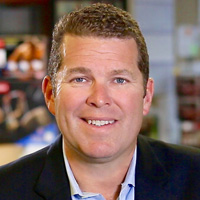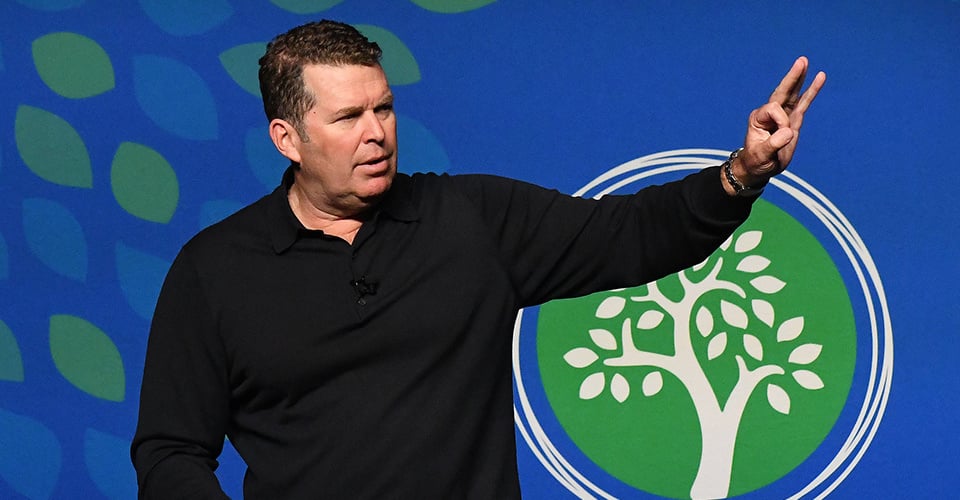As our government grapples with the rapid spread of the novel coronavirus, a growing number of states are ordering their residents to stay at home. I’ve had at least five speeches postponed in the span of eight days during this initial response to the coronavirus crisis. So, I’ve decided to create a theme of the week to carry us through our COVID-19 quarantine routines. This week’s theme is Positive Practice.
I do a little retreat with a couple of my climbing buddies once a quarter—the same guys with whom I’ve climbed a couple of the big summits around the world. And one of them said to me, “Gee, Alden, you’re just always positive. I just don’t have that positiveness in me.” And I’m like, “Well, let me just tell you something. I’ve had to practice it every single day.”
And I remember exactly when I had to do it—the moment I thought I was getting kicked out of SEAL training halfway through, and I got sent back five weeks to repeat a section. There’s a longer story there, but that’s where I flipped a switch and had to start thinking about how to positively cope with having to repeat five weeks of SEAL training, which was miserable in itself.
But, what ended up happening during that time period transformed how I looked at life in general. In this post, I’m going to talk to you about how to do the three Ps of practicing positive. I don’t believe you’re just born with a positive gene—I do believe it’s your choice.
Three Ps of Positive Practice
There are three techniques that I use that help me keep pressing on, but being positive isn’t about just being a cheerleader, nor is it about, “gee, I just want to feel good.” It can help you do that. But, the real reason that I use the ideas about staying positive are to press on and go beyond what I originally thought was possible.
It’s like going out to sea, past the horizon where you can’t see land. That’s hard—you have no more landmarks. The only thing you’ve got are these demons inside your head to battle with. But, if you can beat them, then you can go as far as your imagination and determination will take you. And, the first technique that I use every day is perspective.
Perspective
The first P is perspective. Most of us totally forget how far we’ve come. We forget about our progress because we have a negativity bias. We have a natural tendency to go and look at the negative before anything else. Negativity bias is built into us to help us stay alive—it’s a survival mechanism.
Use perspective to reframe the negative view into a positive outlook. As Thomas Edison would say, “Oh, it just took me 10,000 different ways to figure out how not to create a light bulb.” I used the same technique when I was inventing the Perfect Pushup.
My first product wasn’t the Perfect Pushup, it was the BODYREV. I raised a million and a half dollars and then learned $1,475,000 worth of ways not to launch a product. It was that perspective that convinced me and the team to say, “Hey, for the last $25,000, I think we’ve figured out how we can do this;” and we launched the Perfect Pushup.
Learn to use perspective to your advantage, and you’ll sail as far as you want to go.
Play the Opposite Game
The second P in Positive Practice reminds me of when I was a kid and we had opposite day at school. Do you remember that—where you got to wear your pajamas to school? Even if you don’t remember it, kids today get to have opposite day when they wear pajamas and have breakfast for lunch and things like that.
The biggest challenge to overcoming negativity bias, which is a natural instinct in our brains— where we look at the negative before we look at the positive—is flipping the dynamic. So the second P is what I call “play the opposite game.” Let’s say you’re stuck in traffic and you immediately start complaining about, “Oh, I’m going to be late,” or whatever that issue is.
Play the opposite game: If you’re late to a meeting, you can think on your feet and turn your attention to finding a quick way to get up to speed on what your team already has done. Your overall relaxed, positive attitude probably helps you to some degree here, as it means stress might not cloud your thinking as it might if you had not challenged your negativity bias.
You see, for every action there’s an equal and opposite reaction. And until you focus your brain to look for it, the brain is going to look for the negative. The brain’s going to look for the easiest thing, because the negative is a lot easier. Negative keeps you in the comfort zone. Negative keeps you in the inaction area.
Positive pushes you outside your comfort zone. Positive takes work, but if you play the opposite game and say, “Oh, wait a minute, okay, I’m stuck in traffic. Great. I can listen to another podcast. I can think of something else that we can do at work. I can think of something to do with the family. I got my own quiet time. I’ll shut the radio off and think about it.”
Playing the opposite game is critically important to staying positive. As hard as it can look to find any kind of positive—in particular, having to deal with the passing of somebody—there is always a positive, silver lining, but you have to coach your brain to play that game.
So try it today. Think of something where you experience an immediate negativity bias and play the opposite game. And, in the meantime, hey, stay fired up. Life’s way better that way.
Physical Platform
The third P of how to practice positive is physical—sleep, eat, exercise. Those are the three legs of the stool and the top is your posture. Those four components of physical are your platform for being positive. Why do you think they do sleep deprivation in special forces training, or for that matter, even torture? It breaks you down. How do you feel if you eat a bunch of sugary, high carbohydrate, fatty foods? It slows you down, and if you don’t exercise after a while, your body feels like slow moving mud. Get 20 to 30 minutes of exercise at 85% of your heart rate and you will awaken the positive hormones in your body.
The final piece is a component that everybody overlooks. Even if you got enough sleep, have eaten well, and worked up a good sweat, if you don’t carry yourself well, people will read into your posture that you’re negative. They won’t think of you as somebody with a burning desire to kick ass. Why do you think the very first thing in the military that they teach you is posture? Because when you stand tall with your chin up, your chest out, you look strong, you look confident.
And guess what happens when you do that? You’ll also feel that way. So today, and for every day you’ve got that opportunity, treat the morning like a reset. Get good sleep, work on your diet, go see a nutritionist if you have to, and do some work. And, finally, stand tall, look forward, and get fired up.
Putting Positive Practice to Work
Positive Practice of the three P’s will carry us through our COVID-19 quarantine routines. Perspective, playing the opposite game, and your physical platform are the components that help build a positive mindset. So why all these components? Because negativity is a lot like waves out there in the sea. It’s a constant flow and negativity bias is always with us, but you can rise above it with hard work and practice and get yourself beyond the limits of your comfort zone.
You’ve got to make the choice every single day—do I want to focus on the negative or do I want to focus on the positive? Because the positive can lead you way out past the horizon of the safe harbor and find totally new opportunities—new opportunities that will build the confidence to enable you to go way beyond what you originally thought was possible.
It will not happen all at once and you’ll make little mistakes and you’ll fall down, but that’s fine. Get up, every morning—it’s a reset—do it again. Give yourself permission to try harder. We got this. Because at the end of the day, what it’s all about is living our most epic life.
Go be unstoppable. Put that positive practice to work and I’ll be chatting with you soon.
Join me on Tuesday, April 7 as I share strategies for Thriving in a Quarantine. All proceeds from this Pay What You Can Webinar Fundraiser will go to The Guardsmen to help at-risk Bay Area youth.
Sign up here: https://lnkd.in/evtAgpJ Hope to see you there!





